
Known as “pyramids”, and sometimes as “temples”, or “temples atop pyramids”, or just “structures”, Latin America is strewn with many impressive ruins with some city foundations dating as far back as the 4th century B.C. Most were built by the Aztecs (such as Mexico’s Teotihuacan), the Incas (such as Ollantaytambo and Machu Picchu in Peru), the Maya people (such as Palenque, Tikal, and Copán), or built by the mother of them all, the Olmecs.
Why Travel to the Pyramids of Latin America?
- The low-down: Latin America (Mexico, Central and South America) has many ancient ruins. Some of them are still covered in the jungle which makes it an interesting “hunt” to find and photograph them. Lost cities in the jungle!
- The brightest highlight: The ruins of Palenque in southern Mexico and Tikal in eastern Guatemala are my favourites as they are remote and partly covered by the jungle.
- Intrepid destination: Some of them are intrepid and off-the-beaten-track while others, such as Machu Picchu, are being consumed and destroyed by busloads of tourists. Some of the lesser-known ruins are still free of mass tourism such as Ciudad Perdida (Colombia), Ingapirca (Ecuador), Tiwanaku (Bolivia), Chan-Chan (Peru), San Ignacio Mini (Argentina), Tulum (Mexico), Choquequirao (Peru), and several others.
- Globerovers score (10 is highest): I love all of them though I am glad I went to Machu Picchu many years ago when there were still few visitors. I’ll give an overall score of 9/10.
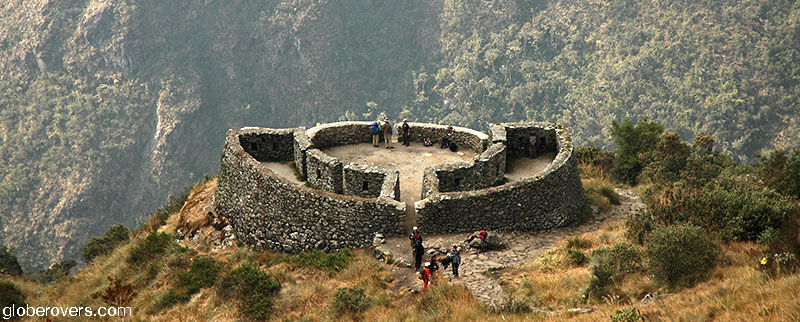
Table of Contents
An introduction to Latin America Pyramids
Some visitors will literally walk around with a flashlight and magnifying glass to decipher the ancient reliefs and inscriptions such as the name glyphs on tablets inside the Temple of the Foliated Cross, at Mexico’s Palenque.
Lost civilizations of the Aztec, Maya, and Inca peoples
Those of us who didn’t care to bring along our magnifying glass and reference diagrams, will wander around the ruins and appreciate them, each in a different way. Whatever your reason for visiting, or the way in which you appreciate these ruins, one thing you should not forget to do is to get to a peaceful spot with a good view over one of the most prominent sections of the ruins. This should preferably be with no strangers around you.

Be still. Try to imagine back to when the city in front of you was at its height of productivity, at its apogee, when tens or hundreds of thousands of Aztec, Inca or Maya people were occupied with their daily chores. What an ant nest it would have been.
Whether you have historian tendencies, or you are just the average traveller, tourist, or intrepid explorer, you will each experience these ancient ruins in a different way.
Many of these ancient civilisations had powerful rulers such as emperors or kings who exerted their powers far beyond their cities. Frequently the cities were invaded and plundered by a warring group. Eventually, most of these civilisations abandoned their cities for various reasons: Drought, food shortages, destructive wars, diseases, or having to run from the conquering Spanish.
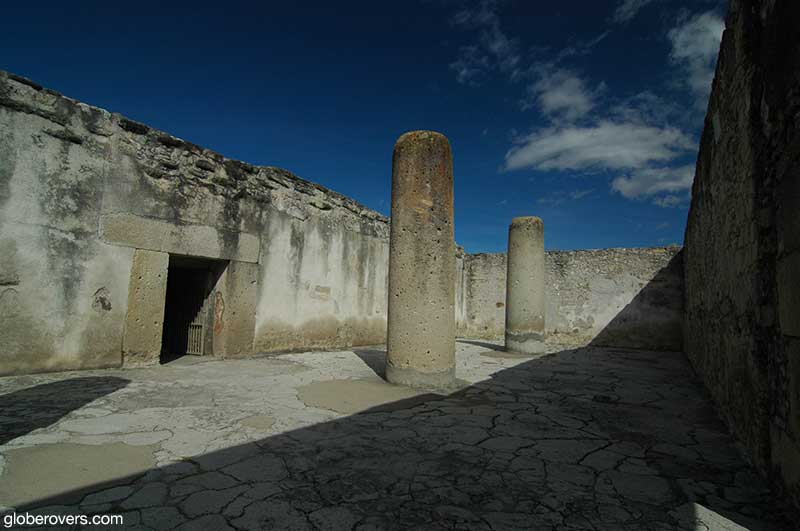
Okay, enough thinking. Open your eyes and take another look at the ruins. Get up, go closer, go inside. Look at the reliefs and inscriptions. Look at the intricate architecture.
The more ruins you see, the more you will appreciate them. The surroundings are often very unique. They are all so distinctive. Seems like no two are alike. So do them all. However, if time is limited, at the top of the must-do list are: Machu Picchu (Peru) via the Inca trail, Palenque (Mexico), Tikal (Guatemala) and Teotihuacan (Mexico).
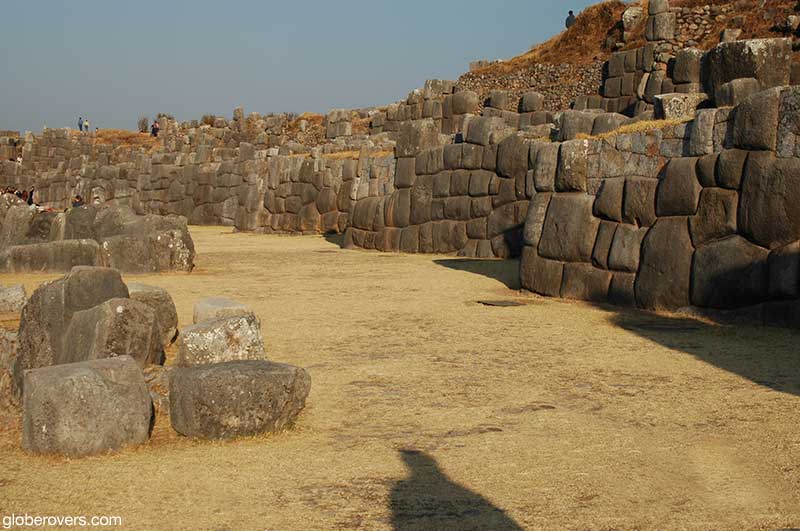
Machu Picchu – PERU
The 15th-century Inca citadel is located on a mountain ridge, 2,430 m above sea level in the mountains of south-central Peru. Constructed as the royal estate for the Inca emperor Pachacuti (1438–1472), it was abandoned by its inhabitants about a century later at the time of the Spanish Conquest which started in 1532 and ended in 1572.
The Spanish invaders never knew about it and so it remained unknown to the outside world until the famous discovery by the American academic, explorer and politician, Hiram Bingham III, in 1911. With the guidance of a few local indigenous villagers, Hiram found the ruins and made the announcement to the world. Since then, much restoration and reconstruction have been done. Being a UNESCO World Heritage Site and voted one of the “New Seven Wonders of the World”, it now attracts about 1.2 million visitors a year, most of whom arrive by bus and train.
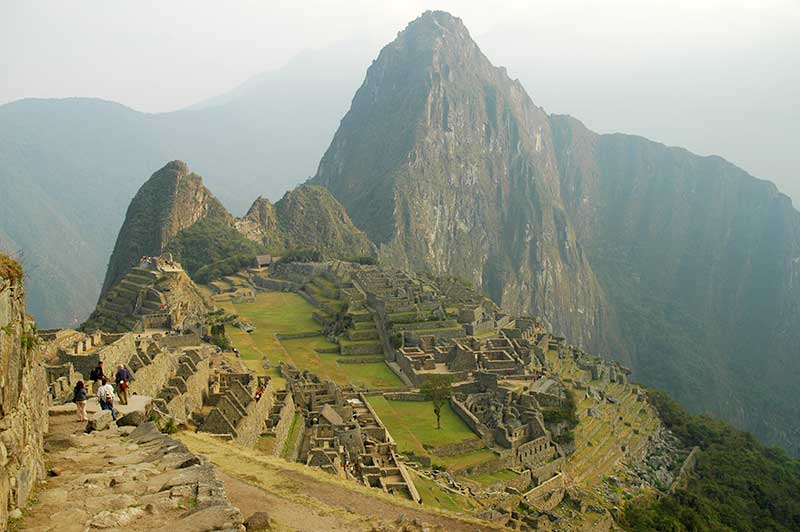
Tucked away deep in the mountains of Peru, the royal estate and sacred religious site of the ancient Inca civilisation sits like a blooming flower. Generally regarded, and respected, as the most impressive ruins across Latin America, Machu Picchu does not only have the mystic aura, but also the location not beholden to any other ancient city. Sure it’s debatable, but let’s start our hike.
I said hike, and not “let’s take the train or the bus”. If you are capable of doing some serious hiking, let’s take out those hiking shoes, the warm sleeping bag, and don’t forget the walking stick either.
The Inca trail to Machu Picchu can be a tough trek for some hikers, and every year it takes a few casualties.
Let’s head out to the famous Inca trail that leads to the Inca ruins of Machu Picchu!
Months ago we would have secured our online booking in a small group. These days the Inca trail trekking is well organised in an effort to reduce the environmental impact of tourism on the fragile environment, the infrastructure, and the local indigenous people’s lives. No longer are hikers allowed to hike alone, nor are tour operators allowed to launch an unlimited number of hikers into the mountains.
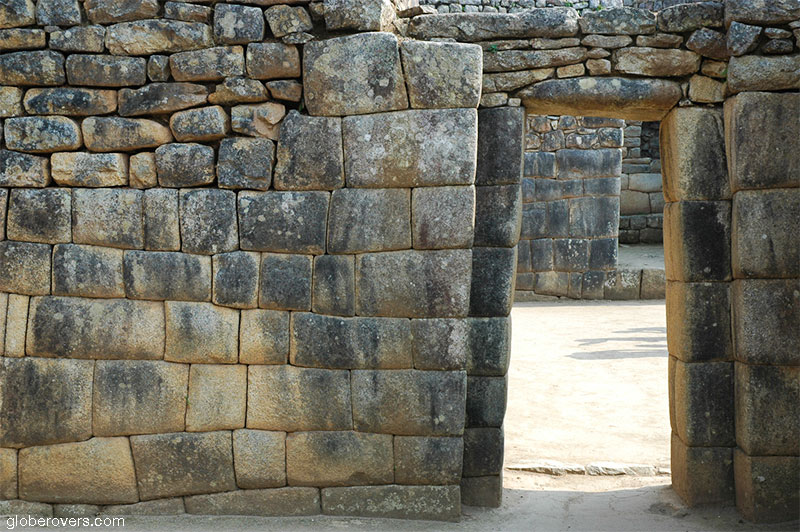
Each year, during February, the trail is closed to allow conservation work to take place. June, July and August is high season (may include May and September), but fear not. As the number of groups are limited, the trail should not get too busy, though off-season will see less hikers on the trail. But, there’s a reason why it’s called “off-season”. Think rain… While the high season is fairly dry and cold, the off-season (October to March) can be wet. You don’t really want to hike these mountains in the rain. So plan carefully.
After a few days of acclimatising in the colourful town of Cuzco, we set off by mini-bus to the start of the Inca trail in Piscacucho, a small community located 82 km along the railway from Cusco to Quillabamba.
Three to four days in Cusco should be more than enough to get us ready for the high altitudes. Don’t fear the thin air at Machu Picchu (2,430 m), as it is located at a lower altitude than Cuzco (3,400 m). The fear should be the aptly named “Dead Women’s Pass” (Warmi Wañusqa at 4,215 m). Say no more! If you don’t have a great stamina for high altitude hiking, your luck may run out along this dreadful pass. But, don’t think too much. Keep walking as we must make it to the glorious city of Machu Picchu. After navigating this pass, the trail drops steeply into the Pakaymayu drainage where you may come across many peacefully grazing vicuña.
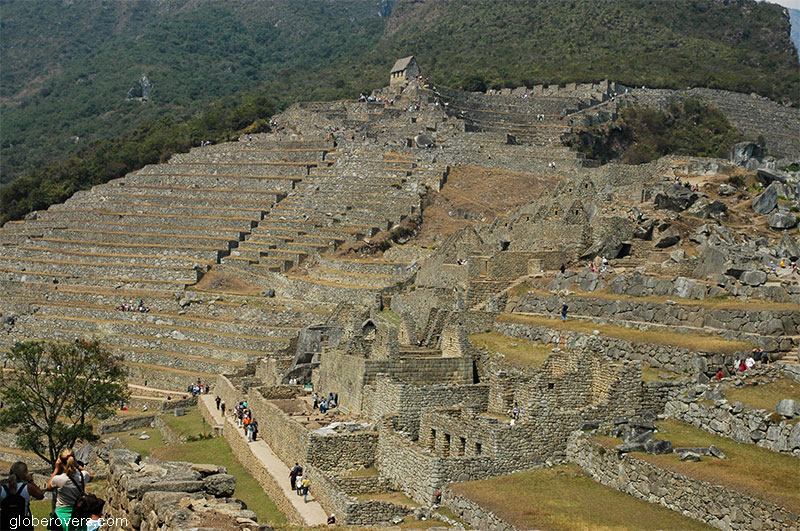
The entire hike from the start to the arrival at Machu Picchu is quite eventful, as we cross jungles, tunnels, many ancient ruins, high passes, and the most incredible mountain scenery. Local Quechua people along the route are friendly as the hikers bring in much-needed cash. They may even ask you to enjoy a glass of Chi-cha, their fermented corn beer.
On the final morning, at sunrise, we stand high on the east slope of the mountain named Machu Picchu. A truly breath-taking experience as we look down on the ruins of Machu Picchu. Once we have our breaths back, we start hiking down the steep steps to explore the ancient ruins!
Teotihuacan – MEXICO
Located about 40 km northeast of Mexico City, the ancient Mesoamerican city of Teotihuacan was established around 100 B.C. With ongoing construction until about 250 A.D., the city was inhabited until the 7th or 8th century. At its apogee, in the early part of the 1st century, the city had about a quarter of a million inhabitants. At the time, this would have been one of the largest cities in the world by population size.
With its close proximity to Mexico City, and architecturally boasting the most significant Mesoamerican pyramids built in the pre-Columbian Americas, Teotihuacan is the most visited archaeological site in Mexico. Get there early in the morning to avoid the crowds.
At the peak of the city’s existence, it spread over an area of about 30 square kilometres and was the centre of a powerful culture whose influence reached out far and wide.
The ancient Mesoamerican city referred to as Teotihuacan was built by the Teotihuacanos. Often claimed to be the “City of the Aztecs”, historians have not unanimously concluded who really built the city. Some of the possibilities include the Nahua, Otomi, Totonac, or even the Maya ethnic groups, or a mix of these groups.
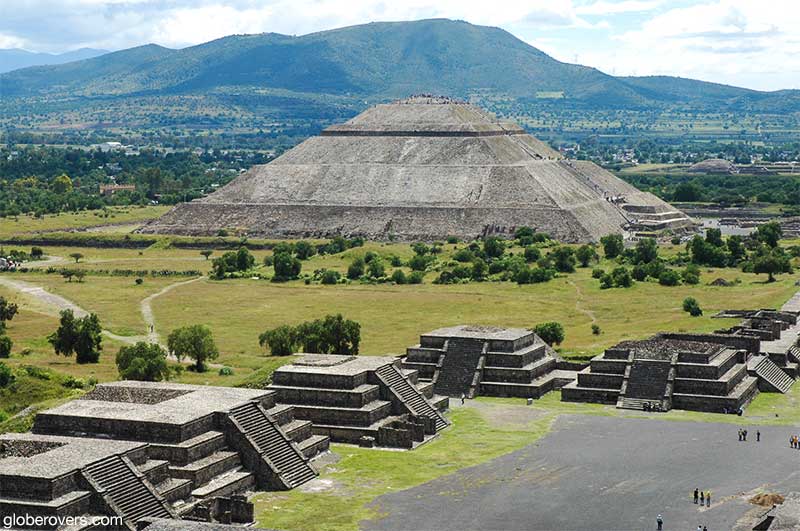
The Teotihuacanos established their capital near the modern day Mexico City, and called it by a name unknown to historians. It was only long after the fall of the city that the Nahuatl-speaking Aztecs started to use the name “Teōtīhuacān” to refer to the city. The name reflects the Nahua creations of myths which they claim occurred in this area, so Teotihuacan therefore refers to “birthplace of the gods”, or “place where gods were born”.
The city was so powerful, it seems there were no fortifications and military structures to protect it from invading forces.
While the area went through severe and lengthy droughts related to the climate changes of 535–536 A.D. it seems evident that what brought the city to a fall was not an outside invasion, but rather an internal revolt.
Whatever the cause of its collapse, evidence suggests it was sudden, which was not uncommon for Mesoamerican city-states. After the fall of the city, it was inhabited by some squatters of unknown ethnicity until about the 7th or 8th century.
The Aztecs dominated central Mexico during the 14th to 15th centuries and they saw the ruins as a place of pilgrimage. They also claimed a common ancestry with the Teotihuacanos and adopted aspects of their culture.
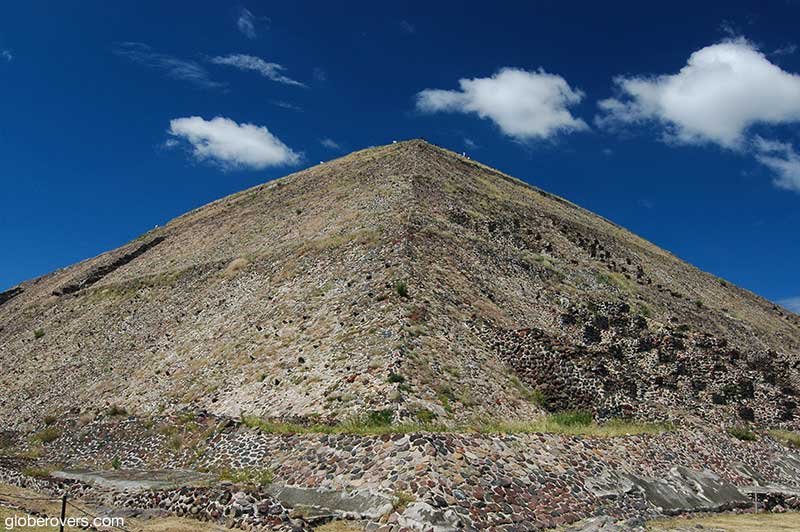
Some of the earliest excavations at the site were started during the late 17th century. More excavations followed in the 19th century which has continued ever since. New discoveries are made frequently. As recently as in November 2014, “large quantities” of mercury were discovered 20 m below the 1,800-year-old pyramid known as the “Temple of the Feathered Serpent”, which is the third largest pyramid of Teotihuacan. Other items in the discovery include jade statues, jaguar remains, carved shells and a few rubber balls.
Visitors are allowed to climb to the top of the pyramids along the steps. It is quite a strenuous climb to the top of the immense “Pyramid of the Sun” which is one of the largest pyramids in the world after pyramids such as the Great Pyramid of Cholula (near Puebla, Mexico) and the Great Pyramid of Khufu at Giza, Egypt. With a height of over 71 m, it is quite a climb to the top of the “Pyramid of the Sun” from where the views are great.
Palenque – MEXICO
The Maya city of Palenque in southern Mexico’s Chiapas State flourished around the 7th century. It started to decline around 800 A.D. and by the time the Spanish conquerors arrived the place was all but deserted.
While by no means large compared to nearby Tikal in Guatemala or Teotihuacan north of Mexico City, Palenque is one of the most interesting ancient sites of Latin America. You somehow feel like a true explorer when visiting as these ruins are partly overgrown by the jungle, and being one of the best-conserved ruins, it has beautiful Maya reliefs and inscriptions to decipher. The largest temple, Temple of the Inscriptions, sits atop a stepped pyramid.
Some 1,400 buildings have been recorded on the site of which only about 10% have been thoroughly explored. This leaves more than a thousand structures still covered by the dense jungle.
The ancient city named by the Maya people as Lakamha, which means “big water”, was referred to by the Spanish invaders as Palenque. Located in the southern Mexico state of Chiapas immediately west of Belize and north of Guatemala, the area is rich in discoveries of ancient civilisations. These include Tikal, Yaxha and Zaculeu in Guatemala, Chichén Itzá on Mexico’s Yucatán Peninsula, and several Maya ruins in Belize such as Xunantunich, Caracol and Lamanai.
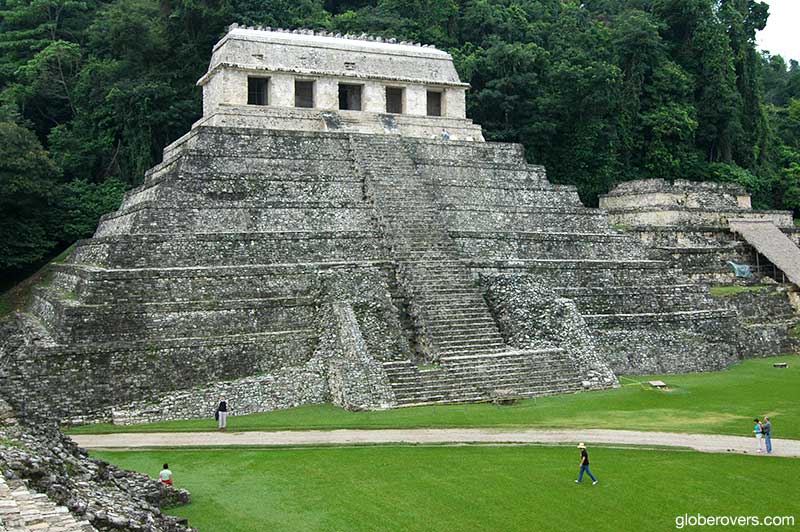
While Palenque was at its apogee between A.D. 500 and 700 A.D., it was constructed roughly from 225 B.C. to well into the 8th century. After 800 A.D. no new buildings were constructed and the city with a fairly large population started its decline. By the time the Spanish conquerors arrived in the 1520s the area was sparsely populated.
These are arguably the most impressive ancient city ruins in Mexico. While not nearly as grandeur as the pyramids at Teotihuacan, the pyramids, temples and other buildings of Palenque are evidence of the high level of elegance and craftsmanship by the Maya people. The sculpted reliefs with their mythological themes of the Maya certainly attest to the creative genius of this civilisation. Also, the architectural and sculptural remains have been exceptionally well conserved.
The ruins of Palenque is partly overgrown by the jungle and the mist-shrouded temples with paths that take twisting routes lend a sense of mystique to it.
Another feature which makes Palenque one of the more special sites in Mexico is its location near the Usumacinta River in the dense jungles of Chiapas State. Reminiscent of the nearby ruins of Tikal in Guatemala, the area gets about 2,160 mm of rain per year and is overgrown, with monkeys and other wildlife in abundance. There are some wooden bridges across streams and sublime waterfalls.
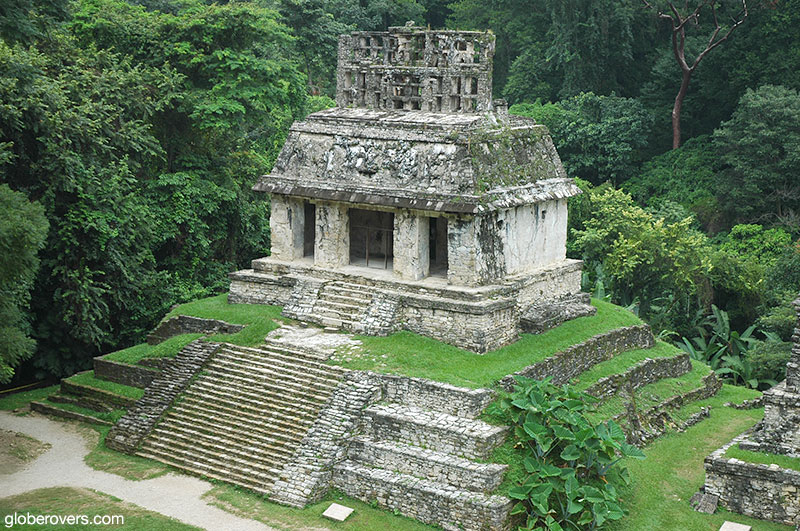
The most prominent temple, Templo de las Inscripciones (Temple of the Inscriptions), is the funerary monument of Hanab-Pakal, the King of Palenque. The temple is home to a beautifully carved sarcophagus with the king’s remains. It also houses the second longest glyphic text known from the Maya world.
Some other notable buildings to explore at Palenque are the Temple of the Sun and the Temple of the Foliated Cross, which are all set on top of step pyramids. Check out the Maya reliefs inside the Temple of the Foliated Cross. These are exceptionally detailed and well preserved.
The King’s Palace (El Palacio), located in the centre, is a large structure divided into four main courtyards and has a maze of corridors and rooms, some of which are lit up. The 5th century tower was restored in 1955.
A few other smaller temples can also be seen on the grounds.

Tikal – GUATEMALA
The ancient Maya ruins of Tikal are, debatably, the most exotic ruins in all of Latin America. With their rich history, as it will be told at sunrise by your local guide atop one of the temples, coupled with their location in the overgrown jungle, it is a place where you can spend hours on end exploring. When you are done with the many temples and other structures, enjoy the natural surroundings. The fauna and flora will keep you busy for many more hours.
Stay at the island village of Flores, some 65 km away. Arrive at Tikal before sunrise and then just follow your guide as he takes you to the top of one of the temples from where you will wait for sunrise as the temple gets surrounded by curious howler- and spider monkeys.
Visitors are allowed to climb these structures as long as you use the stairs and don’t deviate from the markers.
Dating back to the 4th century B.C., the ancient Maya ruins of Tikal reached their apogee between 200 to 900 A.D. Around the 4th century A.D. the Teotihuacanos from the north conquered the city, but life continued. Towards the end of the Classic Period (250 to 900 A.D.) no new infrastructure was built here and evidence suggests that some palaces were destroyed by fire. The population declined and by the end of the 10th century the city was mostly abandoned.
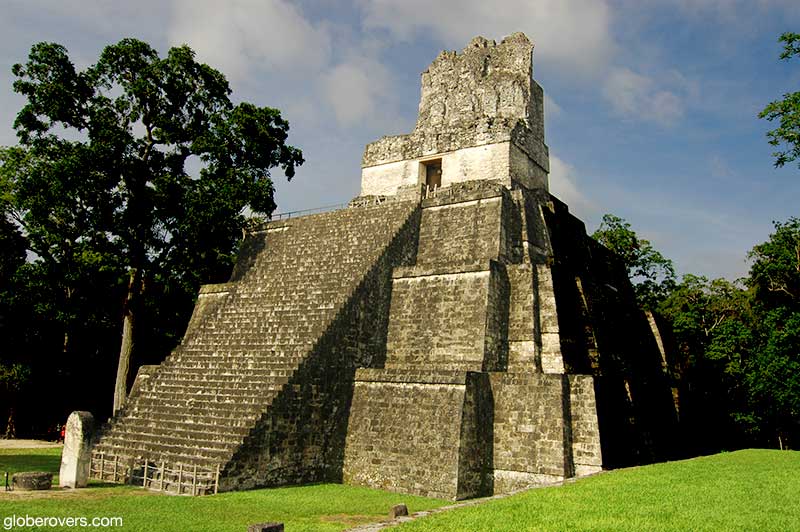
Tikal is one of the largest Classic Maya cities. Among the temples and structures are Temples 1 to 6, the Great Plaza, Central Acropolis, North Acropolis, Plaza of the Seven Temples, and many others. While the city ruins cover an area of 16 square km containing about 3,000 structures, the surrounding area of 570 square km has been declared as Tikal National Park.
The area is rich in fauna and flora which is what truly makes Tikal so special. Annual rainfall is almost 2,000 mm so the vegetation is very lush. Look out for the white-nosed coatis, grey foxes, Geoffroy’s spider monkeys, howler monkeys, harpy eagles, falcons, toucans, parrots, and other wildlife. The park is also home to elusive jaguars and cougars.
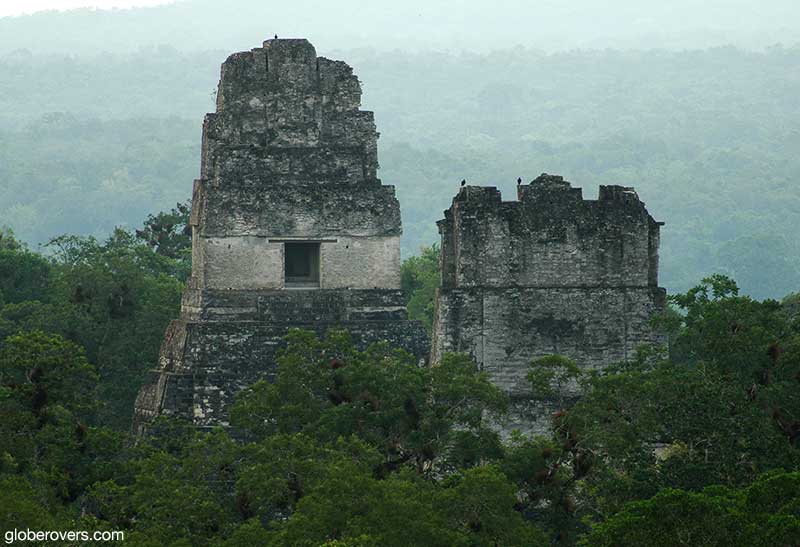
Tikal is located 65 km northeast of the pretty settlement of Flores, a small island with a vibrant community inside Lago Peten Itza. Flores has a couple of cosy guest houses with views over the lake. Tourists who opt to stay here will board their minibus for a day tour to Tikal at around 3 am. By 6 am you will be sitting on top of one of the many temples waiting for sunrise while your local guide will tell you stories about life in Tikal many centuries ago. Around you the morning mist will rise and later disappear in the heat of the sun. Howler monkeys, spider monkeys, and the colourful toucans will try to distract your attention as you sit listening to the guide’s scary and funny stories.
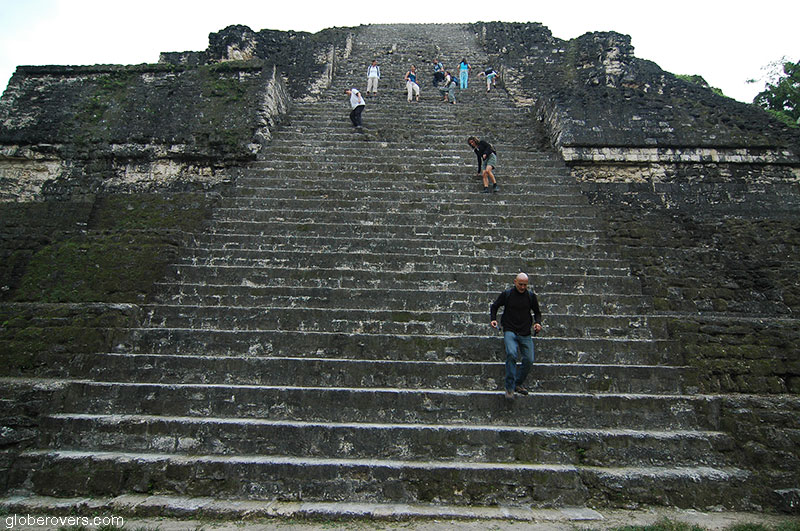
Ollantaytambo – PERU
The Inca archaeological site of Ollantaytambo is located 60 km from Cusco in southern Peru. Ollantaytambo served as the royal estate of Emperor Pachacuti who was the 9th Sapa Inca who transformed the Kingdom of Cusco into the Inca Empire. Some archaeologists believe that Machu Picchu was built as an estate for Emperor Pachacuti.
The area is covered by an extensive set of agricultural terraces, which makes the location quite special. Several storehouses along the surrounding hills are still visible. It was believed that the high altitude and exposure to strong winds kept their contents cool and fresh. The adjacent town of Ollantaytambo next to the Urubamba river is also worth a visit.
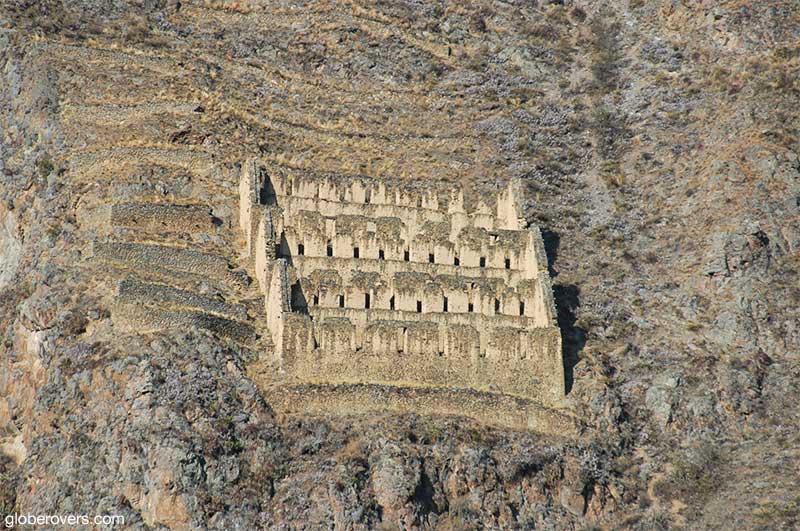
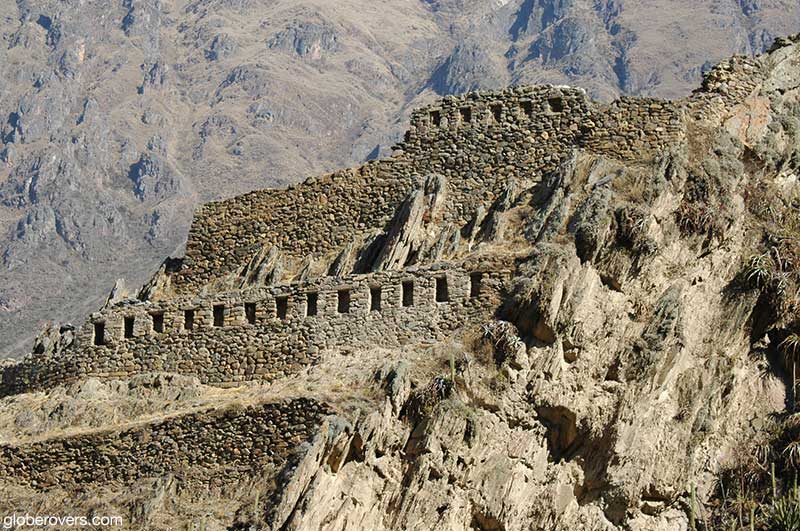
Copan – HONDURAS
Located in western Honduras, not far from the border with Guatemala, are the ruins of Copán, an archaeological site of the Maya civilisation that thrived here between the 5th and the 9th centuries A.D. At its peak, the city had a population of about 20,000 inhabitants and covered an area of about 250 square km. The city suffered some political disasters with the king being captured and executed in 738 A.D.
Over the years, the Copán River managed to erode a significant part of the eastern side of the acropolis. The river has been diverted to protect the site from further erosion. Look out for the colourful scarlet macaws at the ruins. Stay in the nearby village of Copán Ruinas.
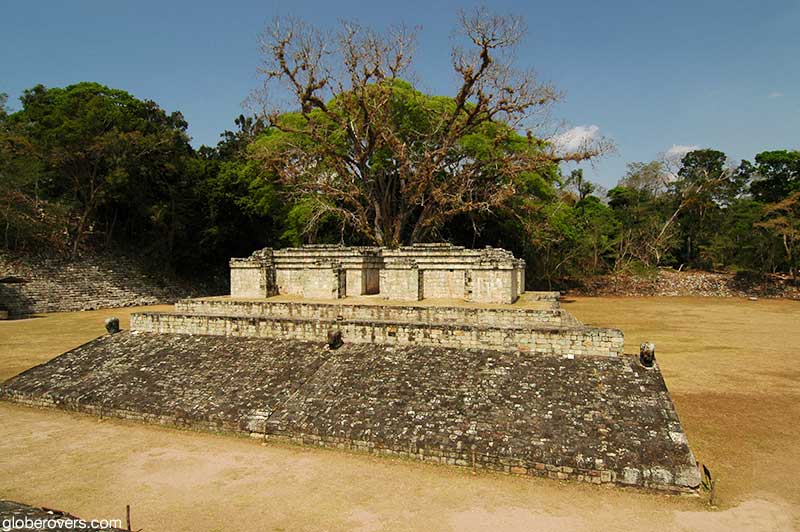
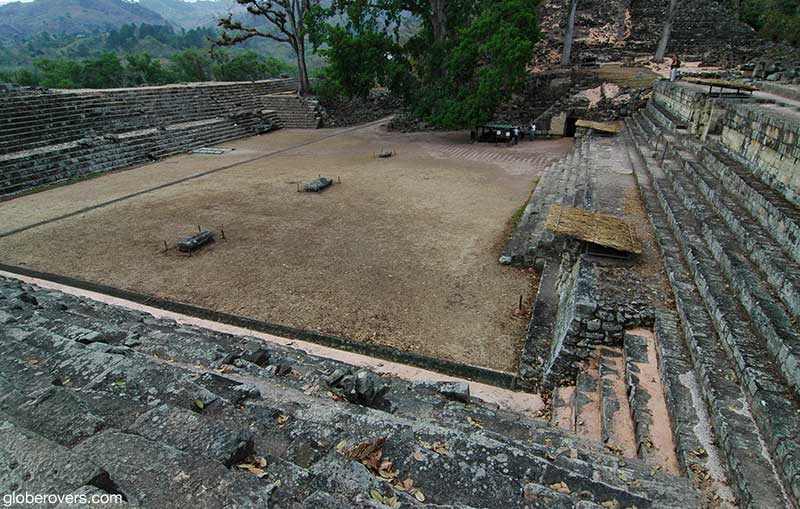
☛ Read more: 10 Great Ruins of Latin American Empires

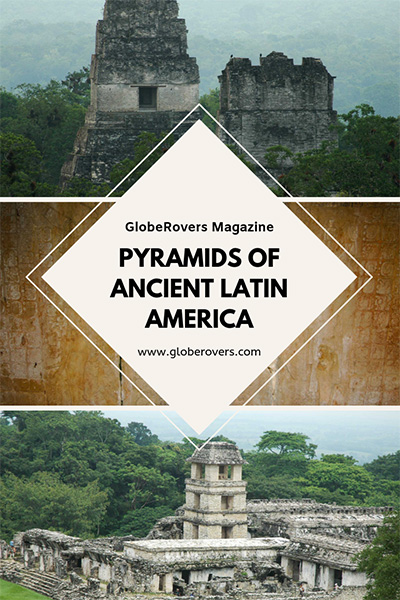
Further reading
- Sacred Ruins of Yogyakarta, Java Island, Indonesia
- The 7 Most Wondrous Ancient Ruins In Latin America
- The Best South American Ruins to Visit

Blog post and photos by Peter who has been travelling almost full-time since 2005 and has been to over 122 countries. He visited several countries, such as Japan, more than 20 times. Peter is Editor-in-Chief and Publisher of GlobeRovers Magazine, an independent travel magazine focused on intrepid destinations.

1 comment
[…] of making elaborate structures in honor of higher beings is not just an Egyptian practice. Early civilizations like the Olmec, Maya, Aztec and Inca people built pyramids as temples to house their deities. […]